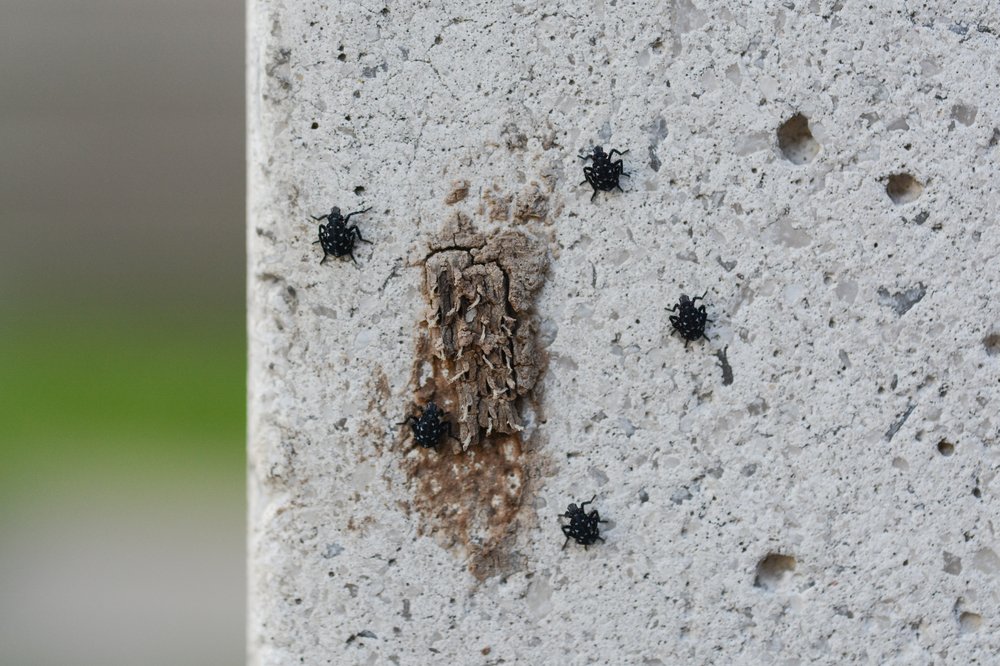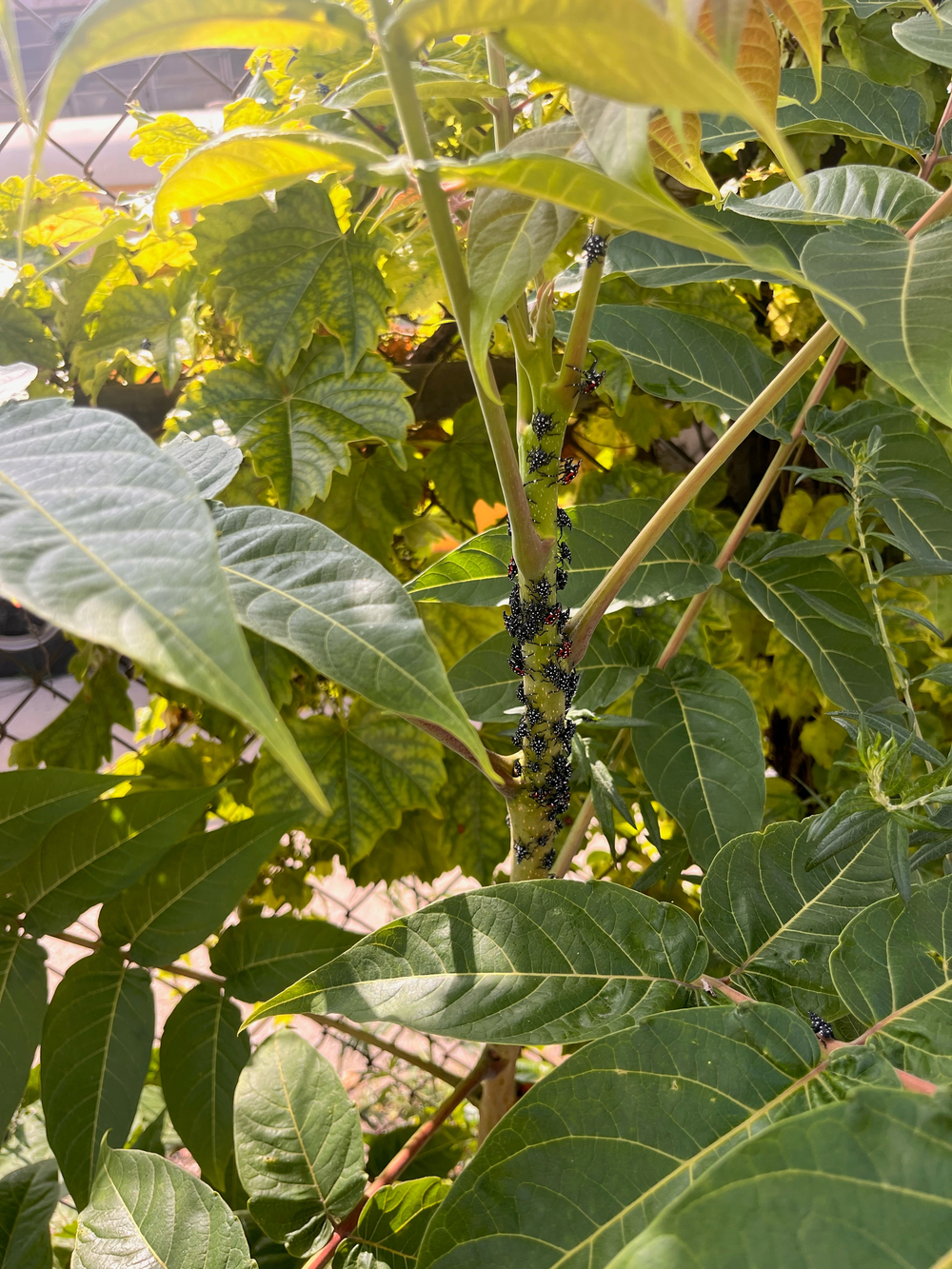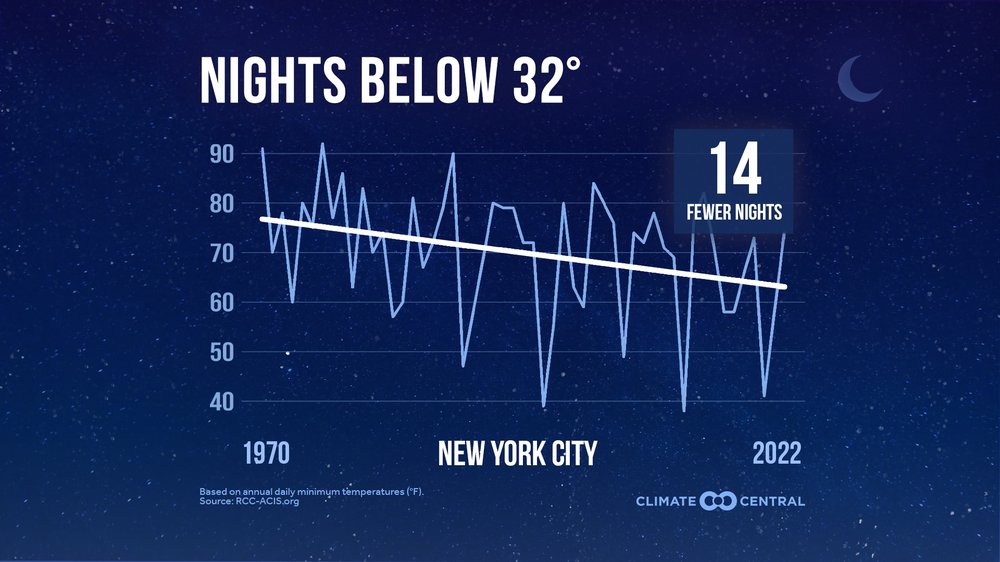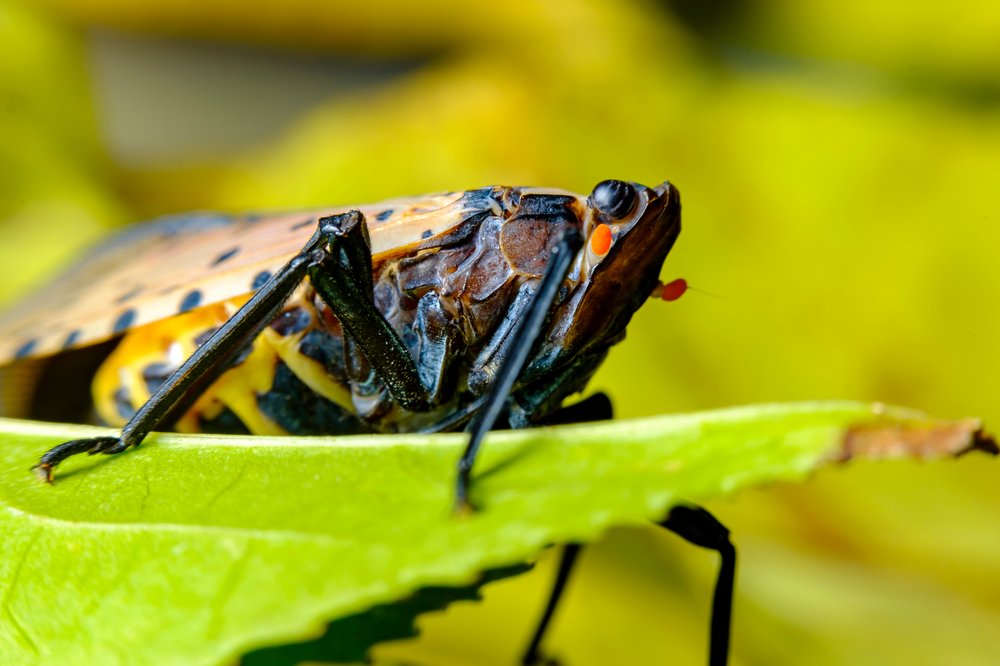Why spotted lanternflies seem worse in New York City this year
July 3, 2023, 11:31 a.m.
An environmental scientist said the bugs are ahead of schedule in New York, where peak levels could be reached this year.

The infamous spotted lanternfly is back for the summer. Some people are reporting that 2023’s infestation feels worse than last year’s, and an environmental scientist said the bugs are ahead of schedule in New York, where peak levels could be reached this year.
This invasive species from Asia has become ubiquitous around the Northeast since it first arrived in 2014. While the bug seems like it is here to stay, it doesn’t seem to be as disastrous as once thought.
Some predictions had called this year for the spotted lanternflies to hatch a bit earlier than normal due to warm weather from the past winter, said Brian Eshenaur, senior extension associate at Cornell University’s Integrated Pest Management Program. But what happened instead is that warmer climate seems to have affected their development once hatched.
“After the hatch occurred, the warm weather of the spring seems to have accelerated their development. So, they are now a week or two ahead of last year,” Eshenaur said. We had the first reports of the 4th instars [the stage that gives rise to the adults] on Wednesday from both Long Island City and the Chelsea area of Manhattan. It looks like the first adults will be seen a week or so earlier than last year.”
This June, the citizen scientist app iNaturalist reported about twice as many verified sightings of spotted lanternflies across the New York metro area compared to a year ago.

Since their arrival, spotted lanternflies have been recorded across much of the Northeast, including Pennsylvania, New Jersey and southern New York. The infestations have crept south into the Appalachian regions of Virginia and West Virginia. Isolated counties in Ohio and Connecticut have reported infestations but quarantined them.
Despite the geographic spread, the total number of lanternflies isn’t likely to increase unyieldingly the way New Yorkers see with other common pests, such as cockroaches.
Because the spotted lanternfly can’t survive indoors and doesn’t feed on human food or waste, Eshenaur says there is a very finite supply of food for the bugs in urban areas. They often feed on the Tree of Heaven, another invasive species that was introduced to North America in the late 1700s. The tree is very common in New York City, but not abundant enough to support continual reproduction of spotted lanternflies. Thanks to this, populations can be expected to eventually plateau after they’ve peaked.
It does look like 2023 in New York City will be the peak.
Brian Eshenaur, Cornell University’s Integrated Pest Management Program
“It does look like 2023 in New York City will be the peak,” Eshenaur said when asked about the population reaching its plateau.
In New Jersey, Rutgers University entomologist George Hamilton said the warm winter has had another effect on the lanternflies, causing a lower number overall in the region.
“Over winter, they have to go through a period of chilling before they break dormancy and start to develop again," Hamilton said. "So that may have impacted the survival of the eggs over the winter."
Due to human-caused climate change, New York City experiences 14 fewer frigid nights now than in 1970, according to the New Jersey-based research group Climate Central. The Northeast is also among the regions nationwide where winter is the season warming fastest over time. And New York City witnessed its second warmest April this spring, with data going back to 1869.


Experts still recommend scraping off egg masses you may see on surfaces like trees, porches and other wood as a way to curb the nuisance and stop nymphs from hatching. Stomping on the live bugs is also still helpful, though the effect on the population is much smaller. When it comes to homemade solutions, professionals like Hamilton recommend only using sprays approved by the U.S. Environmental Protection Agency.
“People need to be careful about some of these concoctions that are being recommended on the internet and other places,” Hamilton said, adding that applying such substances can cause phytotoxicity or plant injury.
Despite the bugs being relatively harmless to most people, some farmers and other stakeholders worry that the lanternflies could destroy crops – specifically wine grapes. Vineyards in Maryland and Pennsylvania have reported losing much of their harvest to the pests in 2022.

Prevention has focused on keeping the insects out of vineyards on Long Island and near the Finger Lakes. Because the spotted lanternfly spreads by jumping onto vehicles, the New York State Department of Agriculture advises travelers to check their vehicles and any equipment stored outdoors.
NY (finally) secures cannabis investor for $200M social equity fund Clouds of tiny bugs are swarming through NYC. Here's why that might be.